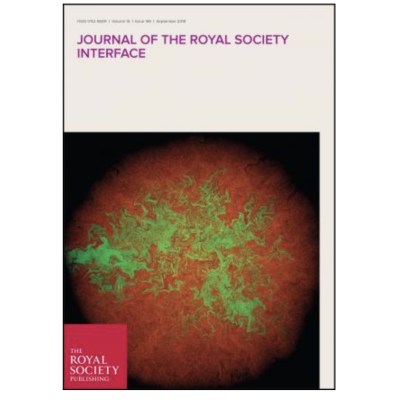Publication
A three-dimensional computational analysis of magnetic resonance images characterizes the biological aggressiveness in malignant brain tumors
J. Pérez-Beteta, A. Martínez-González, V.M. Pérez-García
Journal of the Royal Society Interface 15, 20180503 (2018).
MOLAB authors
Abstract
Glioblastoma (GBM) is the most frequent and aggressive type of primary brain tumor. The development of image-based biomarkers from magnetic resonance images (MRIs) has been a topic of recent interest. GBMs on pretreatment postcontrast T1-weighted MRIs often appear as rim-shaped regions. In this research, we wanted to define rim-shape complexity (RSC) descriptors and study their value as indicators of the tumor's biological aggressiveness.
We constructed a set of widths characterizing the rim-shaped contrast enhancing areas in T1w MRIs, defined measures of the RSC and computed them for 311 GBM patients. Survival analysis, correlations and sensitivity studies were performed to assess the prognostic value of the measurements.
All measures obtained from the histograms were found to depend on the class width to some extent. Several measures (FWHM and \beta_R), had high prognostic value. Some histogram-independent measures were predictors of survival: maximum rim width, mean rim width and spherically averaged rim width. The later quantity allowed patients to be classified into subgroups with different survival (mean difference 6.28 months, p = 0.006).
In conclusion, some of the morphological quantifiers obtained from pretreatment T1-weighted MRIs provided information on GBM's biological aggressiveness. The results can be used to define prognostic measurements of clinical applicability.















